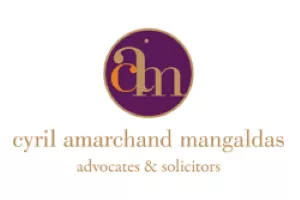Consider this: you purchased a rare Jackson Pollock painting from a prestigious auction house's website, the auction house even provided you with a "Certificate of Authenticity". However, an expert on Jackson Pollock remarks that the painting may be a copy/ a very public dispute ensues, not only questioning the value and authenticity of the painting, but also the reputation of the auction house. While the Courts hear the dispute, the value of the painting is affected by the controversy, its authenticity ever a subject of debate and given the bad publicity from the litigation; the million-dollar Jackson Pollock's value is now diminished greatly.
What the Court of Arbitration of Art (CAfA) is All About
Established in June 2018, the Court of Arbitration for Art (the "Court" or "CAfA") operates as a specialised arbitration and mediation tribunal for resolving art disputes. CAfA intends to undertake proceedings at a global level, addressing matters such as art authentication, contract and chain of title disputes, copyright, and moral rights, to name a few. The importance of this Court stems from problems often associated with judicially-administered art disputes, particularly pertaining to evidence and the art industry's difficulty in accepting judgements pronounced by national courts, due to lack of expertise in the field. CAfA aims to resolve these issues by providing an arbitral tribunal comprising of art experts, rendering awards or results based on sound knowledge and extensive experience.
Furthermore, CAfA endeavours to deliver a speedier more cost-effective and confidential resolution of art disputes. It aims to ensure an effective recourse to disputes within the field of art by providing a forum for adjudication of issues by experts in the industry that are chosen by the parties, thereby establishing greater faith in the system and finalisation of matters. Furthermore, known disputes about provenance and origins of a certain piece of art have a negative impact on its value, apart from substantially affecting the reputation of the parties involved including that of the artist. Therefore, total confidentiality is a significant benefit of referring the disputes to arbitration.
CAfA is a joint initiative between the Netherlands Arbitration Institute (NAI) and the Authentication in Art foundation (AiA). The NAI was established in 1949 and operates as a not-for-profit organisation to promote alternate dispute resolution procedures which range from arbitration, binding advice and mediation. The institute has an Executive Board consisting of people from the business community, legal profession and science who have extensive experience in the field of alternate dispute resolution. The NAI conducts arbitration proceedings in accordance with its arbitration rules.
Similarly, the AiA is an independent not-for-profit organisation that has an Executive Board of prominent international art world professionals who have converged to create a forum to promote best practices in the field of art and art authentication in particular. The AiA was established to develop sound practice guidelines in consonance with the global art community including collectors, art historians, art market professionals, financial institutions, legal advisors, and trust and estate practitioners, amongst other stakeholders from the industry of art.
No Shortage of Art Disputes
The number of disputes over art and cultural property have risen significantly in the past few years. Some high profile examples include the long-running dispute over the ownership of Henri Matisse's 1908 masterpiece Greta Moll between Moll's grandchildren and the National Gallery in London, as well as the closure of the Knoedler Gallery, which was one of the oldest in the US, after it was discovered that numerous fake paintings had been sold. Primarily, the most contested issues in art disputes include ownership and title disputes, questions in relation to authenticity and provenance, misattribution of artwork to another artist, art fraud, sale and contractual disputes including breach of contract, loss of sale as well as auctioneers' liability.
Courts have stated in many cases that with respect to authenticity disputes that they aren't authenticators, they do not go out and uncover but only weigh and examine the evidence presented before them in any dispute. The market is not under the obligation to accept the decision, and the court's decision doesn't do much to establish the authenticity of the artwork. The courts place their reliance on the totality of the evidence. Bill Charron, a leading art law practitioner based in New York, who is working in conjunction with the Netherlands Arbitration Institute (NAI) and the Authentication in Art (AiA) organization and serving as an Advisory Board member, remarks on the issue of acceptance of judicial decision by the art market, "you've got provenance versus connoisseurship and the market just shrugs its shoulders at the whole thing." As a consequence, litigating parties often expend time and money on discovery and expert analysis.1
Some notable disputes where alternate dispute resolution mechanisms have been used to reach an amicable decision include the dispute relating to the Canon Tables between the Western Prelacy of the Armenian Apostolic Church of America and J. Paul Getty Museum regarding the illegal removal of sixteen pages of the Zeyt'un Gospels in the year 1920, that was finally settled in 2015. The Momart warehouse fire dispute, saw a large number of art works by esteemed British artists with an estimated value of £40 million destroyed in a fire at the warehouse where they were stored by the company Momart, which was ultimately settled through a mediated agreement.
Part – II of this post will elaborate the procedure that will be followed by the Court of Arbitration for Art and what this development means for the Indian art industry.
Footnote
[1] Green, Adam, host. "Bill Charron (partner at Pryor Cashman) and Megan Noh (partner at Cahill Cossu Noh & Robinson) – Court of Arbitration for Art" ArtTactic, iTunes app, June 5, 2018.
The content of this article is intended to provide a general guide to the subject matter. Specialist advice should be sought about your specific circumstances.




